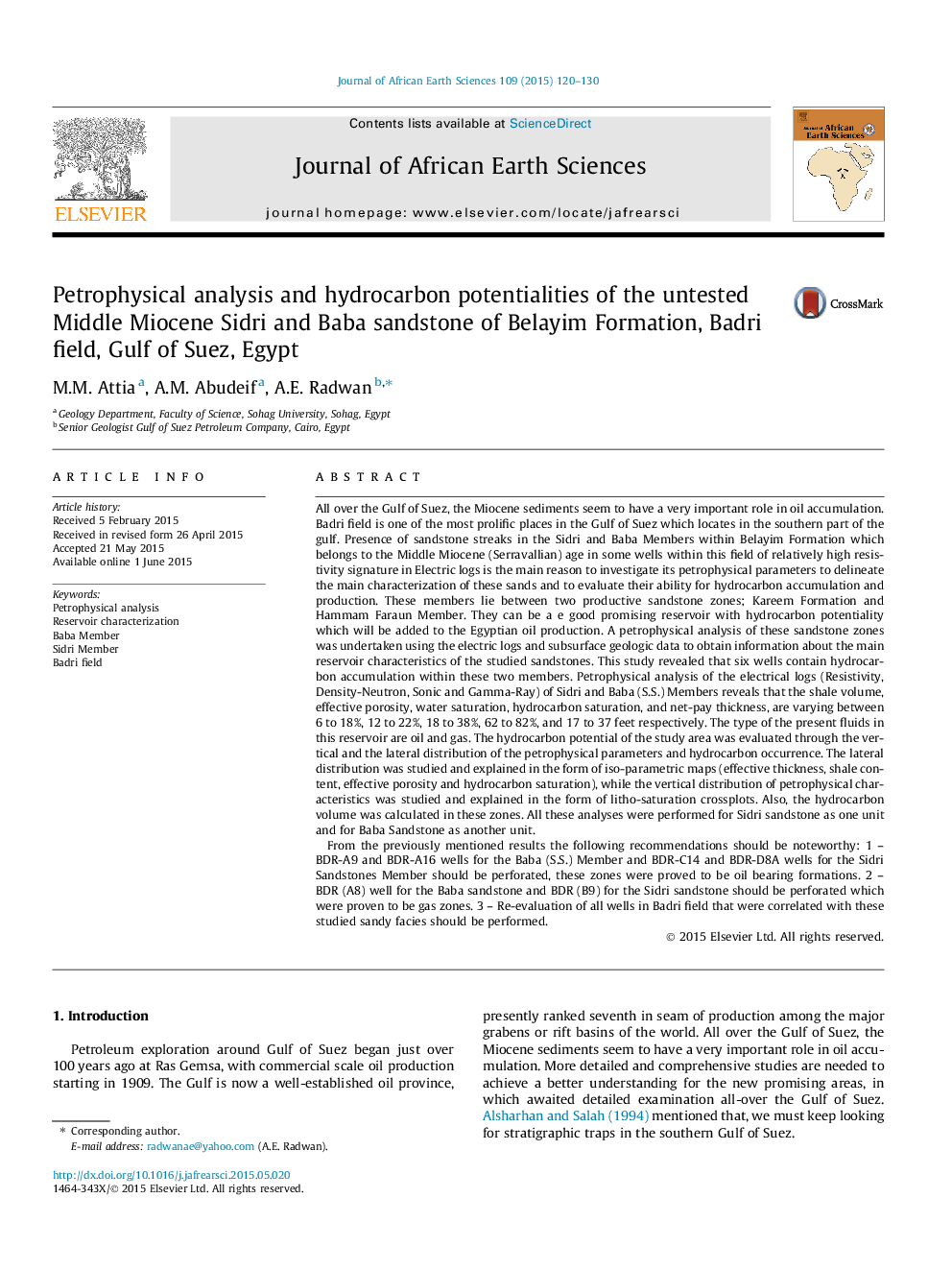| کد مقاله | کد نشریه | سال انتشار | مقاله انگلیسی | نسخه تمام متن |
|---|---|---|---|---|
| 4728640 | 1640198 | 2015 | 11 صفحه PDF | دانلود رایگان |
• Baba and Sidri Members contains hydrocarbon with commercial quantities.
• Their lithology is composed mainly of sandstone with little shale volume.
• Perforate these reservoirs in BDR (A8 and B9) wells as gas producers.
• Perforate these reservoir in wells BDR (A9, A16, C14 and D8A) wells as an oil producer.
• Re-evaluate all wells in the Badri field, that correlated with these sandy facies in this area.
All over the Gulf of Suez, the Miocene sediments seem to have a very important role in oil accumulation. Badri field is one of the most prolific places in the Gulf of Suez which locates in the southern part of the gulf. Presence of sandstone streaks in the Sidri and Baba Members within Belayim Formation which belongs to the Middle Miocene (Serravallian) age in some wells within this field of relatively high resistivity signature in Electric logs is the main reason to investigate its petrophysical parameters to delineate the main characterization of these sands and to evaluate their ability for hydrocarbon accumulation and production. These members lie between two productive sandstone zones; Kareem Formation and Hammam Faraun Member. They can be a e good promising reservoir with hydrocarbon potentiality which will be added to the Egyptian oil production. A petrophysical analysis of these sandstone zones was undertaken using the electric logs and subsurface geologic data to obtain information about the main reservoir characteristics of the studied sandstones. This study revealed that six wells contain hydrocarbon accumulation within these two members. Petrophysical analysis of the electrical logs (Resistivity, Density-Neutron, Sonic and Gamma-Ray) of Sidri and Baba (S.S.) Members reveals that the shale volume, effective porosity, water saturation, hydrocarbon saturation, and net-pay thickness, are varying between 6 to 18%, 12 to 22%, 18 to 38%, 62 to 82%, and 17 to 37 feet respectively. The type of the present fluids in this reservoir are oil and gas. The hydrocarbon potential of the study area was evaluated through the vertical and the lateral distribution of the petrophysical parameters and hydrocarbon occurrence. The lateral distribution was studied and explained in the form of iso-parametric maps (effective thickness, shale content, effective porosity and hydrocarbon saturation), while the vertical distribution of petrophysical characteristics was studied and explained in the form of litho-saturation crossplots. Also, the hydrocarbon volume was calculated in these zones. All these analyses were performed for Sidri sandstone as one unit and for Baba Sandstone as another unit.From the previously mentioned results the following recommendations should be noteworthy: 1 – BDR-A9 and BDR-A16 wells for the Baba (S.S.) Member and BDR-C14 and BDR-D8A wells for the Sidri Sandstones Member should be perforated, these zones were proved to be oil bearing formations. 2 – BDR (A8) well for the Baba sandstone and BDR (B9) for the Sidri sandstone should be perforated which were proven to be gas zones. 3 – Re-evaluation of all wells in Badri field that were correlated with these studied sandy facies should be performed.
Journal: Journal of African Earth Sciences - Volume 109, September 2015, Pages 120–130
